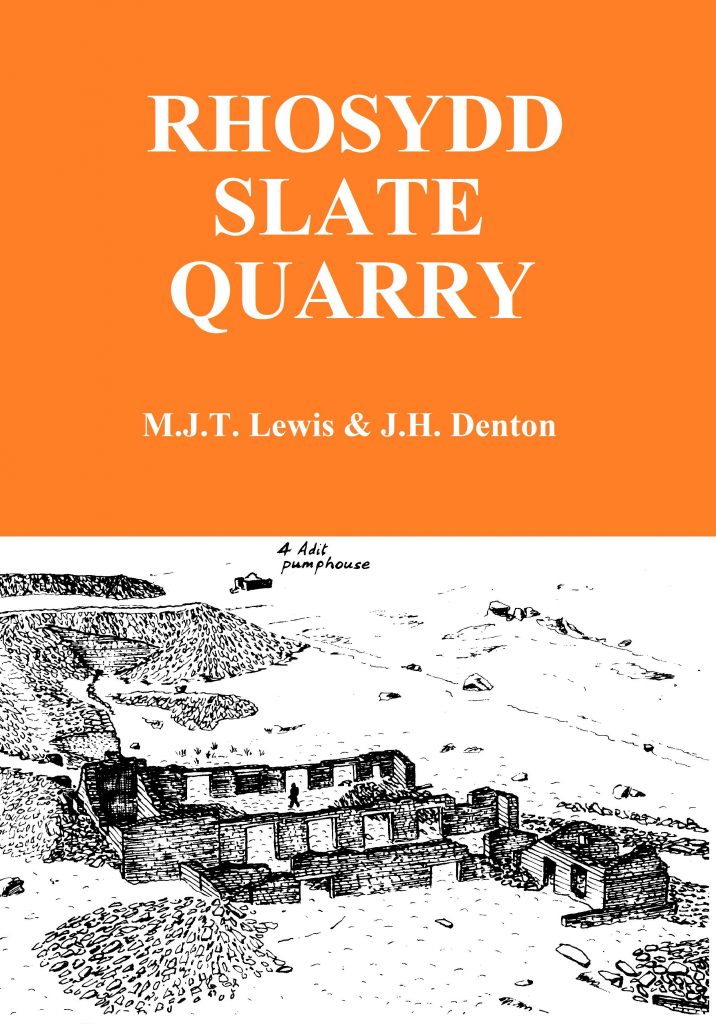 A new print run of Rhosydd Slate Quarry, by M.J.T. Lewis and J.H. Denton, is now available.
A new print run of Rhosydd Slate Quarry, by M.J.T. Lewis and J.H. Denton, is now available.
In 1974, the list of available literature covering mining history of any kind was not particularly long. In Cornwall, The publication of numerous popular books by Bradford Barton on the mines of S.W. England was well-established, but by and large this was an exception for the U.K.
Rhosydd Slate Quarry, originally published in 1974, set a new standard for detailed observation of the slate quarries of North Wales. The book was effectively the published results of a couple of week-long field courses in Practical Industrial Archaeology, run by the Department of Adult Education of the University of Hull in 1971 and 1972, the two authors being the course tutors. Further work, undertaken by students attending a Hull University evening class in industrial archaeology at Lincoln, provided more useful research for the project.
Further impressions of the book, mainly using the unaltered original text, followed in 1975 and 1994, but with the publication out of print for many years and the demand continuing, second-hand copies of Rhosydd Slate Quarry were commanding high prices. Mike Moore, well-known seller of mine and cave-related books, recognised the demand and, with permission, commissioned a new print run in 2017, and a new edition of the book is now available.
If all you are looking for is a guidebook to Rhosydd Quarry, then this is not necessarily the book for you. However, if you are prepared to spend time thoroughly exploring the workings, both on the surface and underground, and also bear in mind that the book was written over 40 years ago, the book will prove an invaluable tool to you. The history of slate-quarrying at this remote location is well presented, and the problems associated with having to work in such a remote location are brought home. The transport links to the outside world, the extensive use of water-power, and the expansion of the dressing sheds is well explained. The text is accompanied by many scale drawings, sketches and maps. All of the few photos from the original publication are included, although their quality is not high because the originals have not been available to reproduce them afresh.
The authors gave careful consideration to which of the many slate quarries to use for this study in the early 1970s. There are so many quarries to choose from, and many that are more complex and contain far more in the way of extraction infrastructure than Rhosydd, but Rhosydd was a good choice. To use the authors’ own words:
“Rhosydd Quarry was chosen for the exercise for many reasons. It was of average size, neither a giant – a daunting task for a first attempt – nor a pygmy – insignificant and perhaps untypical”.
Today, the quarry is a popular place for mine-explorers to visit, and there can be few better reasons for studying the history of a mine than to provide an extra dimension to the visitors’ experience. The popularity of the mine as part of the “Croesor to Rhosydd through trip” in recent years has drawn many visitors to Rhosydd. Having a good understanding of how the quarry was worked and developed adds an extra dimension to any visit to an old mine, and there is little doubt that reading this book is the ideal way to achieve this.
The book is available from Moorebooks, and costs £16 plus postage.
Rhosydd Slate Quarry, M.J.T. Lewis and J.H. Denton. Softback, A4 94pp. ISBN 978-1-9998134-2-0
